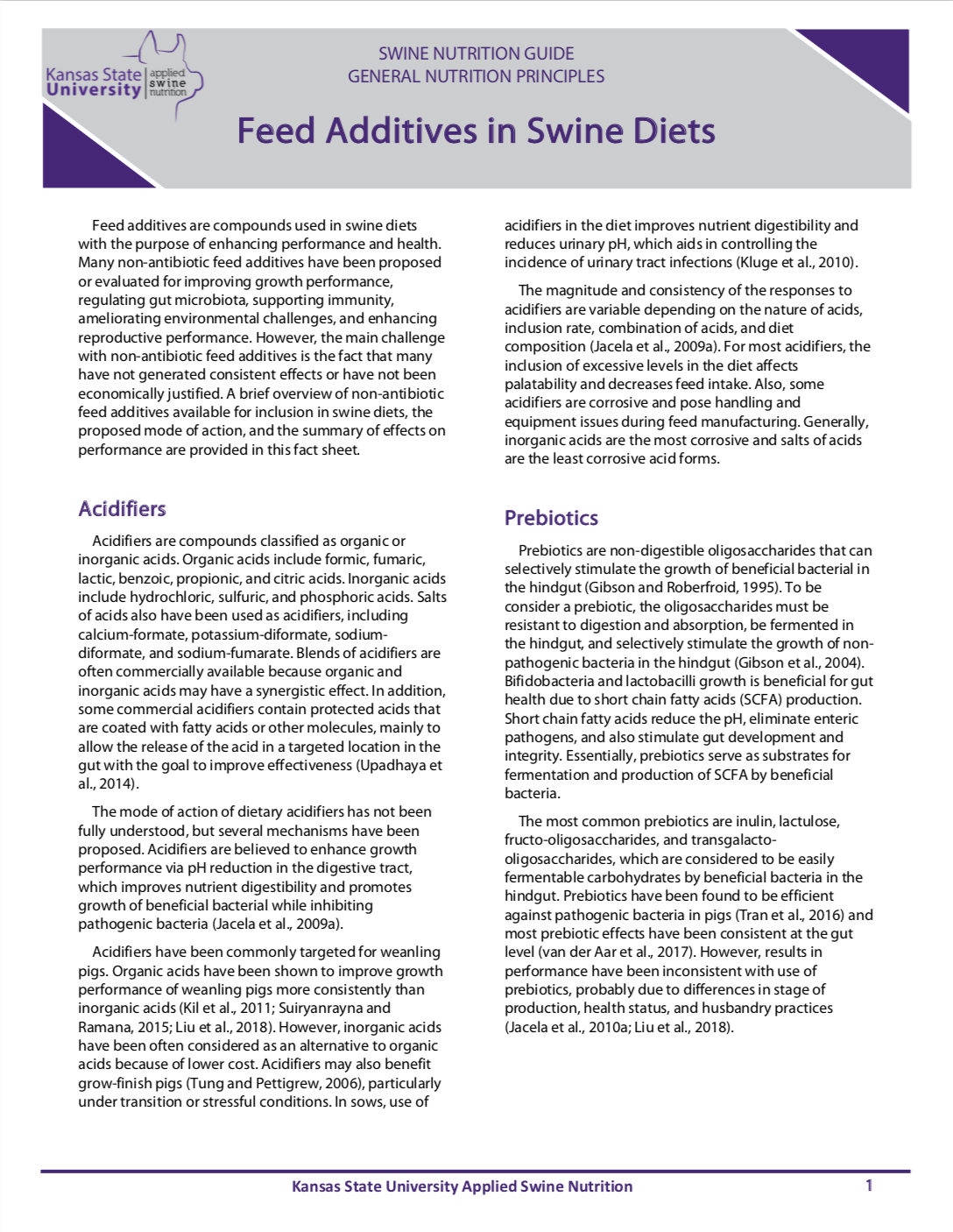Antioxidants
Antioxidants are compounds that reduce the oxidative degradation of fatty acids, i.e. fats and oils. Antioxidants thus can be added to fats and oils to reduce oxidation of fats and oils. However, antioxidants cannot reverse fat oxidation once it occurs (Kerr et al., 2015).
Antioxidants are classified by mode of action into primary and secondary antioxidants based on effects on which stage of fat oxidation. Fat oxidation is described in three stages: initiation, propagation, and termination, with different compounds produced in each stage (Shurson et al., 2015). Primary antioxidants inhibit the initiation and delay the propagation of fat oxidation, and are most effective in the early stages of oxidation. Primary antioxidants are natural carotenoids, flavonoids, tocopherols, and synthetic ethoxyquin, butylated hydroxytoluene (BHT), butylated hydroxyanisole (BHA), propyl gallate, among others (Kerr et al., 2015). Secondary antioxidants slow the rate of fat oxidation and are effective in different stages of oxidation. Secondary antioxidants are citric acid and ethylenediamine-tetra-acetic acid (EDTA), among others (Kerr et al., 2015). Commercial antioxidant products commonly include a combination of antioxidants with synergistic activity to improve efficacy (Jacela et al., 2010b).
Antioxidants have been used to ameliorate the impact of fat oxidation on growth performance (Lu et al., 2014), although the benefits have not been consistent (Song et al., 2014). Also, antioxidant addition in swine diets have been used to control rancidity, which could help to maintain palatability and prolong storage time (Kerr et al., 2015). In that sense, the use of antioxidants may be more important in diets with high amounts of added fat and diets manufactured in warm climates (Jacela et al., 2010b). Regular analysis of fat sources important to provide an accurate assessment of the degree of fat oxidation and rancidification.
